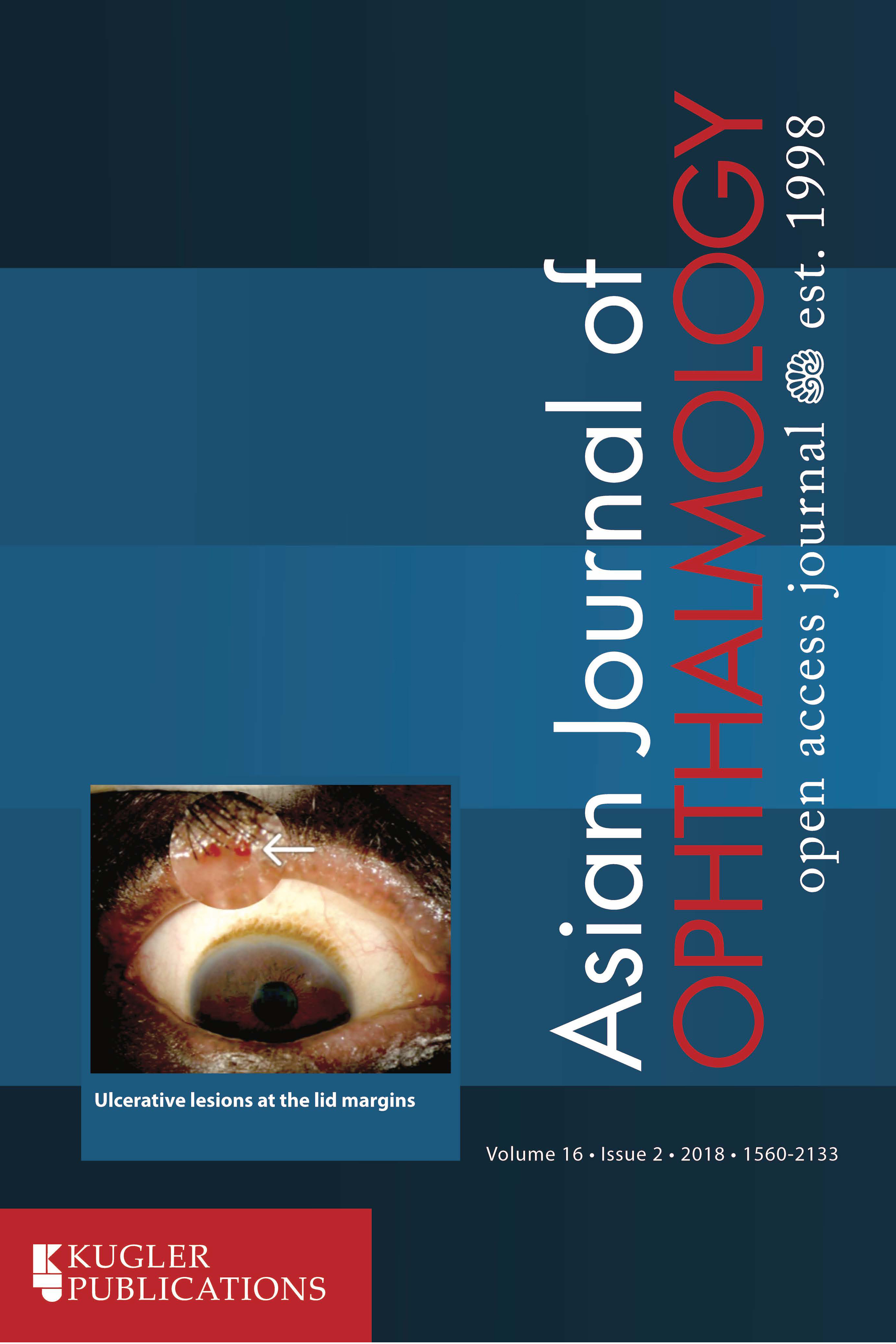Prevalence of glaucoma in first-degree relatives of patients with primary open-angle glaucoma and normal-tension glaucoma
Abstract
Objective: To determine the prevalence of glaucoma in first-degree relatives of patients with primary open-angle glaucoma (POAG) and normal tension glaucoma (NTG).
Methods: Observational study of first-degree relatives of patients with POAG and NTG who were screened for glaucoma.
Results: A total of 66 first-degree relatives of patients with glaucoma (POAG/NTG) were included in the study. We found a prevalence rate of 16.6%: 13.6% were diagnosed to have the disease and 3% were newly detected to have glaucoma during the study. We found that although 66.7% of the subjects were aware of the family history of glaucoma, only 36.4% were aware that they were at increased risk of developing glaucoma.
Conclusion: In our study, we found high prevalence of glaucoma in first-degree relatives of patients with glaucoma. This highlights the importance of selective screening of high-risk groups such as first-degree relatives of patients with POAG/NTG.
References
who.int/blindness/GLOBALDATAFINALforweb.pdf.
2. Ramakrishnan R, Nirmalan PK, Krishnadas R, et al. Glaucoma in a rural population of Southern
India: The Aravind Comprehensive Eye Survey. Ophthalmology. 2003;110:1484-1490. doi:
10.1016/S0161-6420(03)00564-5.
3. McNaught AI, Allen JG, Healey DL, et al. Accuracy and Implications of a Reported Family History
of Glaucoma: Experience From the Glaucoma Inheritance Study in Tasmania. Arch Ophthalmol.
2000;118(7):900-904.
4. Leske MC, Nemesure B, He Q, Wu SY, Fielding Hejtmancik J, Hennis A. Patterns of open-angle
glaucoma in the Barbados Family Study. Ophthalmology. 2001;108(6):1015-1022.
5. Vegini F, Figueiroa Filho N, Lenci RF, Garcia Neto D, Susanna Junior R. prevalence of open angle
glaucoma in accompanying first degree relatives of patients with glaucoma. Clinics (Sao Paulo)
2008;63(3):329-332 doi: 10.15900/S1807-59322008000300007.
6. Nguyen RL, Raja SC, Traboulsi EI. Screening relatives of patients with familial chronic open angle
glaucoma. Ophthalmology. 2000;107(7):1294-1297.
7. Klein BE, Klein R, Sponsel WE, et al. Prevalence of glaucoma: The Beaver Dam Eye Study.
Ophthalmology. 1992;99(10):1499-1504
8. Wolfs RC, Klaver CC, Ramrattan RS, van Duijn CM, Hofman A, de Jong PT. Genetic risk of primary
open-angle glaucoma. Population-based familial aggregation study, Arch Ophthalmol.
1998;116(12):1640-1645.
9. Kong X, Zhu W, Chen X, Chen Y, Sun X. Familial aggregation of primary open angle glaucoma in
Shanghai, China. Mol Vis. 2013;19:1859-1865.
10. Rajendrababu S, Gupta N, Vijaykumar B, Kumaragurupari R, Krishnadas SR. Screening first
degree relatives of persons with primary open angle glaucoma in India. J Curr Glaucoma Pract.
2014;8(3):107-112. doi:10.5005/jp-journals-10008-1172.
11. Okeke CN, Friedman DS, Jampel HD, et al. Targeting Relatives of Patients With Primary Open
Angle Glaucoma: The Help the Family Glaucoma Project. J Glaucoma. 2007;16(6):549-555. doi:
10.1097/IJG.0b013e3180391a4c.
Copyright (c) 2018 Asian Journal of Ophthalmology

This work is licensed under a Creative Commons Attribution 4.0 International License.
Authors who publish with this journal agree to the following terms:
- Authors retain copyright and grant the journal right of first publication, with the work twelve (12) months after publication simultaneously licensed under a Creative Commons Attribution License that allows others to share the work with an acknowledgement of the work's authorship and initial publication in this journal.
- Authors are able to enter into separate, additional contractual arrangements for the non-exclusive distribution of the journal's published version of the work (e.g., post it to an institutional repository or publish it in a book), with an acknowledgement of its initial publication in this journal.
- Authors are permitted and encouraged to post their work online (e.g., in institutional repositories or on their website) prior to and during the submission process, as it can lead to productive exchanges, as well as earlier and greater citation of published work (See The Effect of Open Access).



